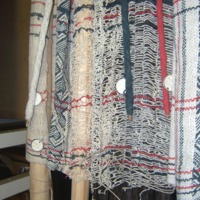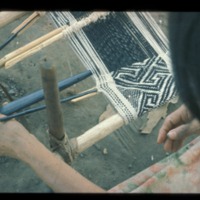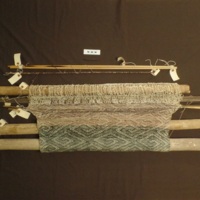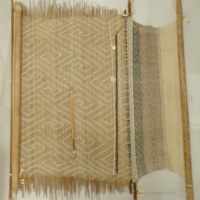Weaving
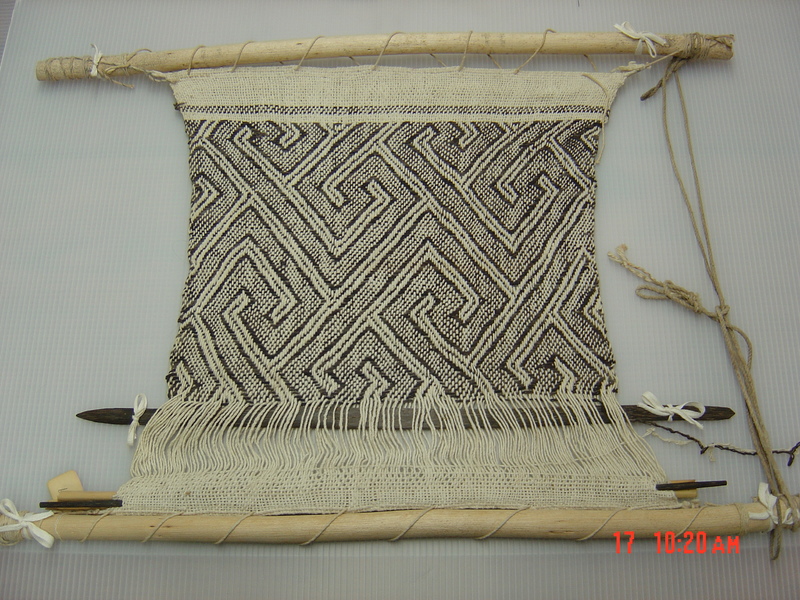
This unfinished cloth is still on the loom with which it was made as an example of the looming process. This is a backstrap loom which consists of loom bars at either end with a heddle and beater within the cloth.
Peruvian Cashinahua Weaving
The Peruvian Cashinahua often use looms to create their woven goods. They utilize two types of loom, the backstrap and the continuous warp. Each allows for slightly different types of weaving, the continuous warp allowing for circular shapes in varying sizes while the backstrap was generally used for larger textiles. These are just generalities as the individual weaver chooses what type of loom is best for her purpose.
Weaving skill is a source of pride, and determined based upon others' admiration for one's work. A weaver’s craftsmanship is judged upon the complexity of her designs as well as the evenness of her stitches. The woven items created by the Cashinahua showcase the weavers’ skills and resourcefulness in using local materials for fibers and dyes. The designs created with looms are traditional in that they have been a part of Cashinahua imagery for generations. Woven designs are also manipulated by women, with different combinations and colors being utilized to give each piece a unique appearance.
Eastern Toba Weaving
The Toba are traditionally hunter-gatherers, relying on the Gran Chaco’s forests and plains for wild game, fruits, and vegetables. In the 1860s Toba individuals began to enter the industrial work force in seek of livable wages. Throughout the twentieth century, loss of land and decreased access to wild game pushed Toba families to the peripheries of towns, living in slum-like communities (some seasonally, some annually) and depending on physical labor for money. Men spend extended time away from their families working for the lumber and sugarcane industries while their wives and children labor in cotton fields.
The weaving techniques and woven materials are periodical, representing weaving traditions employed from the early 1960s through the late 80s. These items were created during a time of great transition for the Toba. Traditional means of production were becoming modernized as sewing machines were slowly introduced to their communities. Woven goods were also increasingly created as novelty items to sell to tourists. Though hand-made baskets and bags were still used by some, large plastic buckets and plastic grocery bags began to replace some of these hand-made goods due to their practicality and availability.

